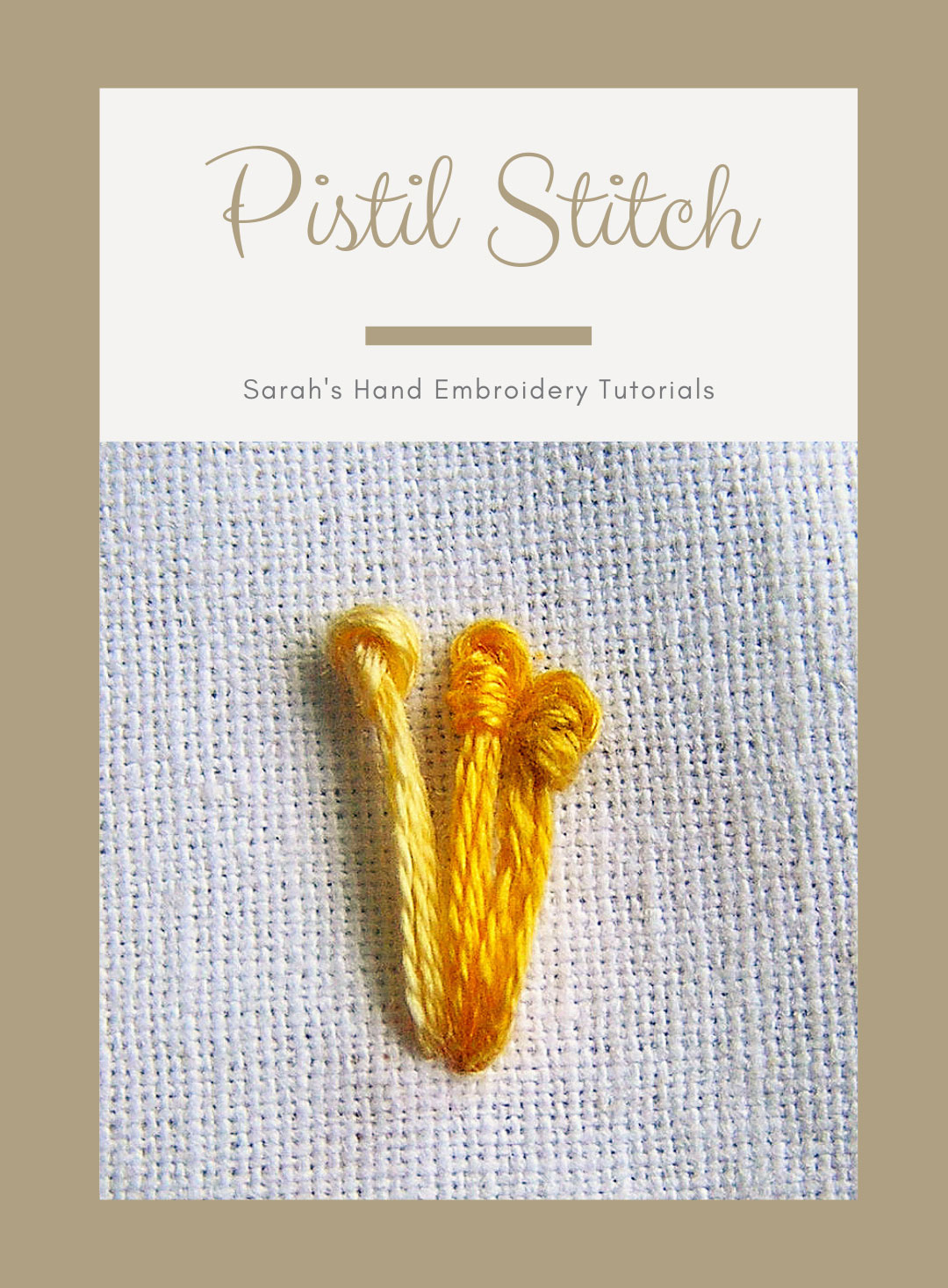Pistil Stitch
Looking to add some intricate and delicate details to your embroidery project? Pistil stitch is an elegant solution to creating beautiful small flowers, dandelions, and even berries. This stitch is often used in hand embroidery and requires the use of a single straight stitch to create the central stem and then the addition of French knot stitches to create the delicate pistils. In this post, we will explore the benefits and techniques of using pistil stitch in your embroidery projects.
The Pain Points of Embroidery
Embroidery can be a cumbersome process. It requires patience, skill, and attention to detail. Creating delicate details like flowers and pistils takes time and precision. Choosing the right stitch, color, and technique can be overwhelming for beginners. That's where pistil stitch comes in as an easy-to-learn stitch that adds a sophisticated touch.
What Is the Target of Pistil Stitch?
Pistil stitch is a highly decorative and versatile stitch loved by crafters globally. It can be used to add intricate details to various embroidery projects and works great on small areas. The stitch is essential in creating beautiful dandelions, teasels, and thistles that can add a beautifully textured effect to your embroidery.
Summary of Pistil Stitch and Related Keywords
Pistil stitch is a highly versatile embroidery stitch that can be used to create beautiful floral designs, dandelions, berries, and thistles. This stitch is perfect for adding small decorative details to your embroidery project. Although embroidering can be a daunting task, pistil stitch is easy to learn and adds a sophisticated touch to your project. Read on for tips and techniques to master this delicate stitch.
Pistil Stitch for Adding Dandelions to Your Embroidery Project
When I first learned pistil stitch, I was amazed at how easy it was to create beautiful dandelions in my embroidery designs. I used this stitch to add delicate details to a floral collage, and they turned out amazing. To create a dandelion, start by creating the central straight stitch that you will use to build off of. Then, create the first knot stitch at the end of the straight stitch, pulling the thread to the back of your fabric. Create four more knot stitches around the central stitch, and voila, you've got yourself a dandelion.

One of the greatest benefits of pistil stitch is that it can be used in so many different ways. You can add it to other stitches within a design to create a more complex texture. It can be used to fill areas of a specific design or used to add small clusters of berries or flowers to a larger piece. The stitch can vary in length or width, allowing you to customize your embroidery project as desired.
Using Pistil Stitch for Teasels in Embroidery
I also used the pistil stitch to create small teasels in an embroidery piece I made for my sister. It added a delicate touch to the overall piece and made the flowers pop. To create the teasel, start by making a central straight stitch. Then use French-knot stitch to create a cluster of knots around the stem. You can vary the number of knots to increase or decrease the size of your teasel.

Exploring Pistil Stitch for Thistles in Embroidery Pieces
Pistil stitch is also perfect for creating the thistle flower, a popular flora in Scotland. To create the thistle, start by creating a central straight stitch. Then, create a cluster of French-knot stitches around the stem. Once completed, create a group of long straight stitches off to the side with individual French-knot stiches at the ends.

Question and Answer Section
Q: Can I use Pistil Stitch on Clothing Items?
A: Yes! Pistil stitch can be used on clothing items, but we recommend that you test the fabric before you begin. The stitch is perfect for adding small decorative details to sleeves, collars, and pockets.
Q: Can Pistil Stitch be used to create larger flower patterns?
A: Yes, pistil stitch can be used to create larger flower patterns, but we recommend you use it in combination with other stitches to give depth and dimension to your design.
Q: What is the best fabric to use when working with Pistil Stitch?
A: The best fabric to use when working with pistil stitch is lightweight cotton or linen, preferably with some structure. These fibers will help highlight the delicate nature of the stitch and the intricacies of the design.
Q: What length of thread is best to use with Pistil Stitch?
A: A length of 12-18 inches is perfect to use with pistil stitch. This length will allow you to make the stitch multiple times before needing to re-thread your needle.
Conclusion of Pistil Stitch
Pistil stitch is a great way to add delicate and intricate details to embroidery designs. It's perfect for creating small, decorative touches such as flowers, dandelions, and berries. Although it may seem complicated, it is an easy stitch to learn and can elevate the look of your embroidery project. Have fun experimenting with different variations of the stitch, and we hope this post has inspired you to explore the possibilities!
Gallery
How To Do The Pistil Stitch - Sarah's Hand Embroidery Tutorials

Photo Credit by: bing.com / stitch pistil embroidery also known rocksea hand
ELLA'S CRAFT CREATIONS: TAST WEEK 37 PISTIL STITCH

Photo Credit by: bing.com / stitch craft pistil ella creations hence flowers amazing had name used beautiful time
Leelas Hobbies: TAST 2012 Week 37 Pistil Stitch

Photo Credit by: bing.com / sheaf stitch stitches pistil embroidery fly leelas hobbies hand chain detached designs close ups
Pistil Stitch · Extract From Mandalas To Embroider By Carina Envoldsen

Photo Credit by: bing.com / stitch pistil embroider mandalas carina harris extract press search
Pistil Stitch And Fake Pistil Stitch

Photo Credit by: bing.com / stitch pistil fake embroidery choose board
